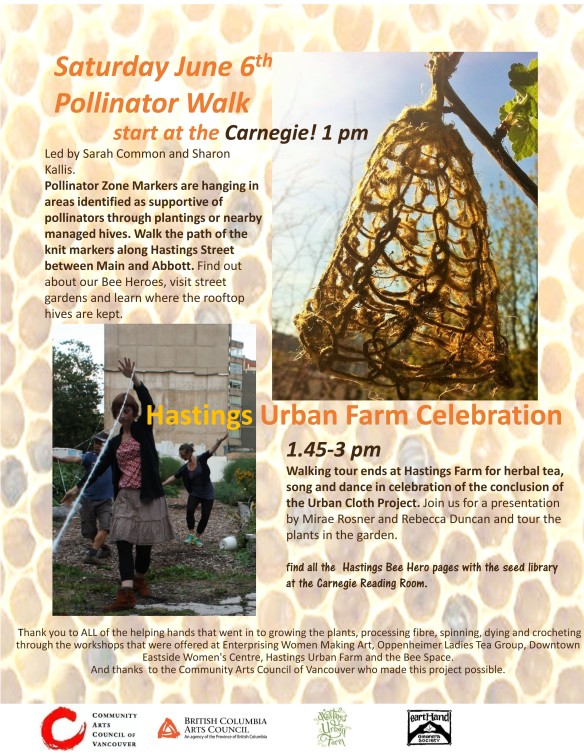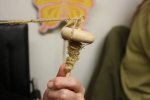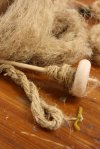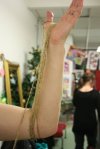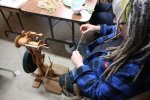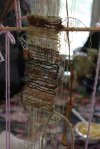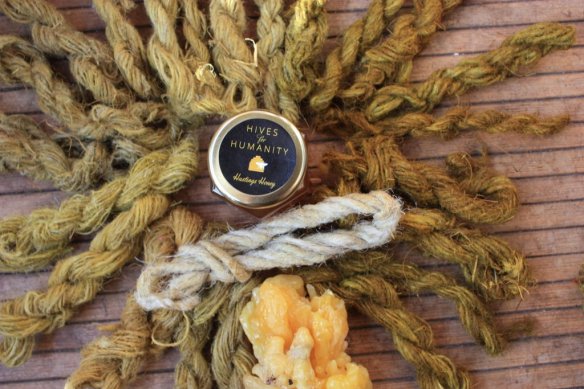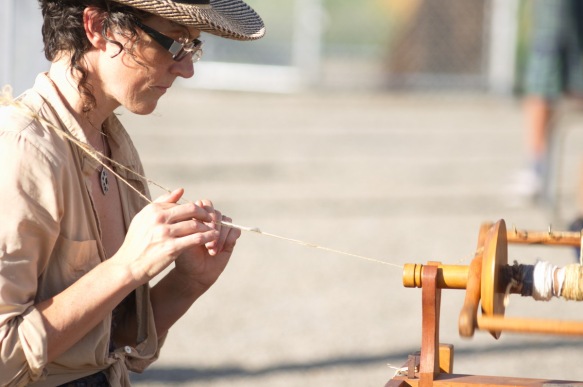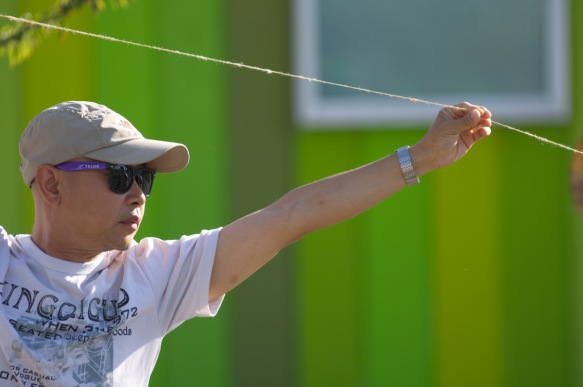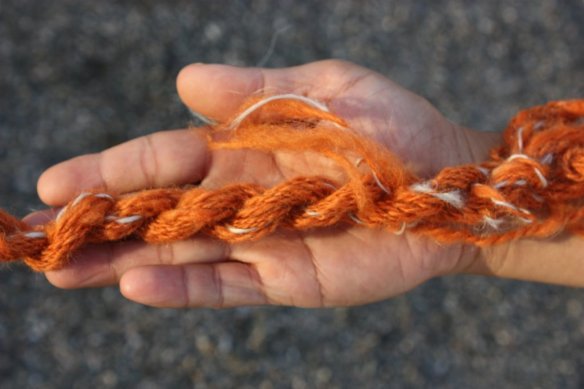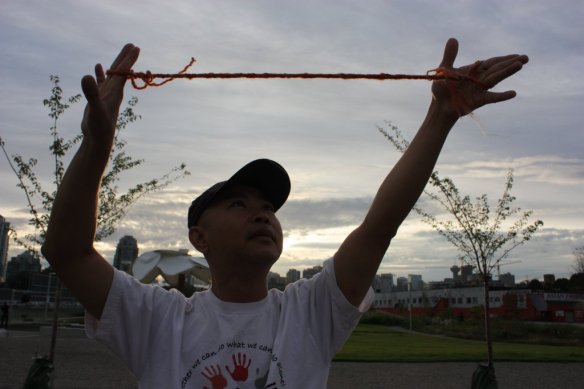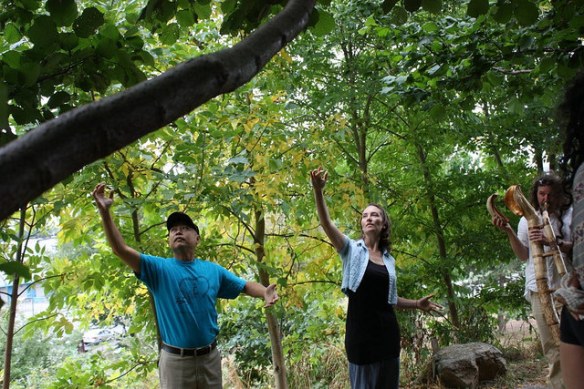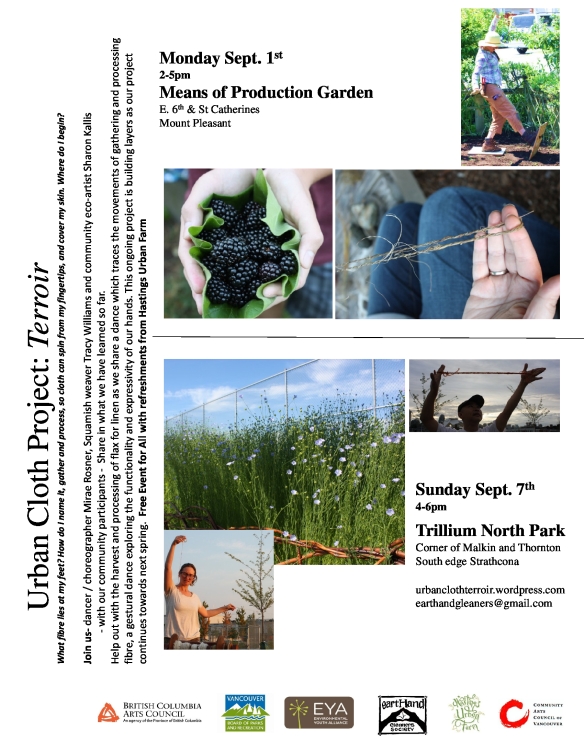The world turns around us – the world of sight, sound, texture, smell – and when we stop to listen, it is inside us after-all. The dance is stillness – or at least quiet – as we are always resonating, a community of sensation.

Apples at Means of Production: traces of human activity in the garden
A few years back, my husband and I arrived home to Vancouver after three years of travel. We had been literally around the world, always travelling east from our point of origin. It had been a whirlwind trip and a very necessary adventure. Arriving home, I had a deeper context with which to reform my sense of this place. And, as a dancer, I had to ask myself: what are dances that come from this place, this land? Terroir is a rich opportunity to begin this investigation, and in these early stages we have explored a variety of dance activities: using sensation as a means to map place, cultivating gestures based on the movements of labour, listening and moving in resonance with sounds, gathering textures and drawing traces of their rhythms.
As we engage with gathering, spinning, cultivating and processing, I am especially fascinated with our hands – their articulate ability to work and express. So, at our weekly sessions, we have been creating gestures based on natural textures and environmental sounds. We have also been learning to spin with wheels and drop spindles, and assisting with some general garden maintenance. Working from the memory of these tasks, we have been creating expressive movements with our hands and transforming them into new gestures through improvisation. These gestures will be gathered and combined to form a dance for the hands, one that tells the story of our process.
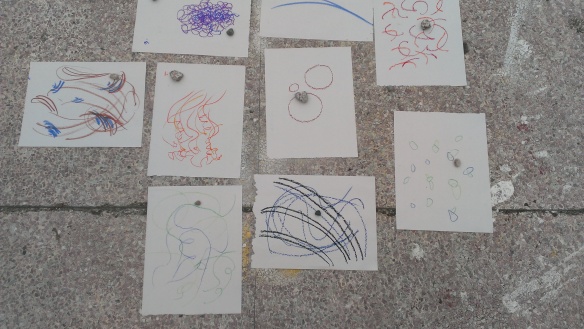
Texture mapping at Hastings Urban Farm
We are now moving past the first harvest and into the late summer and autumn, we will begin to investigate our footsteps and pathways through our garden spaces as we tend and collect our crops. And, we will start to look at patterning based on weaving. We have some spun fibres to work with and when stretched-out between two or more people, there is lots of potential for a weaving dance that displays the length of fibre produced by our wheels.

Fence at Means of Production: an inspiration for movement following weaving & natural rhythms
And of course, we are accompanied by our spinning wheels. We are currently working on ways to transform them into percussive machines – the sound of spinning becomes a gentle and meditative noise, highlighting the cyclical and repetitive nature of work, peppered with human variation in speed, and our need for mistakes, discussion, breaks … With more than one wheel going, the syncopation becomes a kind of free-jazz machine song. For me, the sound invokes images of slow and deliberate movement, dances which are meditative and connected.
We will see how our dances shape-up in the coming month of August. There are an exciting number of themes to explore as we trace the activities associated with urban cloth production. How they begin to form will be shaped by our collaboration – with each other and with the sun, rain, plants, animals, tools, passers-by, traffic … all those elements which create the social and environmental fabric of Terroir. – Mirae


